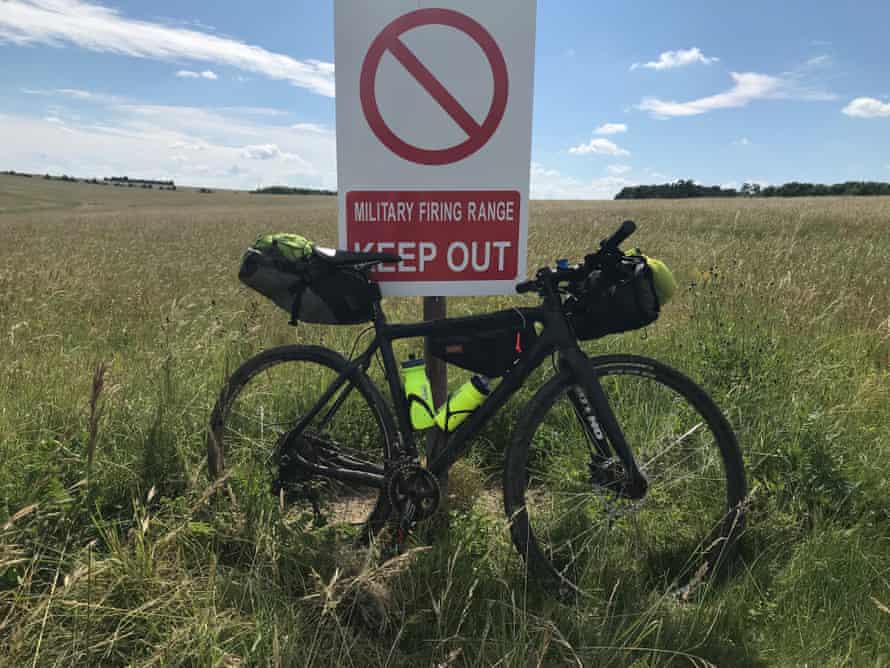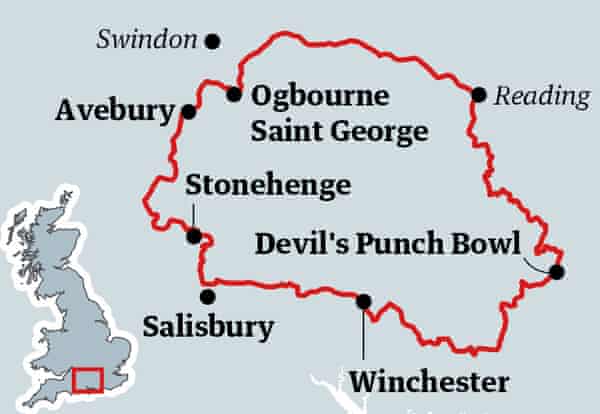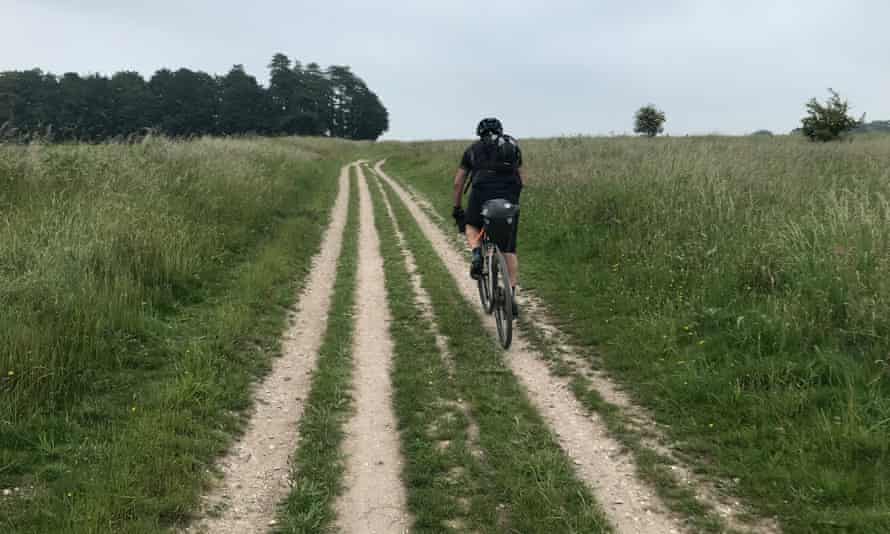Bikepacking and gravel bikes: new concepts in off-road cycling, or marketing fad?
A four-day loop around the King Alfred’s Way gave ample time to test the claims of faster speeds and greater off-road ease

Last modified on Fri 2 Jul 2021 07.03 EDT
The world of leisure cycling is nothing if not inventive when it comes to ways to sell bikes and associated bits of kit, and two of the most popular new – or theoretically new – concepts are bikepacking and gravel bikes.
As with all such ideas there is the inevitable marketing guff, but both are nonetheless interesting, if sometimes misunderstood. Earlier this week, on trend as ever, I managed both, with a four-day ride around the King Alfred’s Way, a 218-mile primarily off-road loop through the lanes, tracks, woods and ridges of Hampshire, Wiltshire, Berkshire, Surrey and West Sussex.
The trail, put together by Cycling UK and taking in parts of the Ridgeway and South Downs Way, is highly recommended, but what I want to recount here is more the mechanics of how I and a friend did it – and to describe the ideas behind such trips.
What is bikepacking? Is it just touring rebranded?
Yes and no. Touring traditionally sticks to roads and involves a sturdy, road-type machine, normally with a luggage rack, even racks, and panniers. Bikepacking is similarly self-supported but tends to mean lighter loads, with bags connected more directly to the bike, allowing faster speeds and greater ease on off-road routes. Of course, this isn’t a new idea, but it is increasingly popular.
What bike do you use? And what is a gravel bike, anyway?

You can bikepack on any bike you want, including a road machine for high-speed tarmac touring. But straying too long on to rough, slippery surfaces calls out for wider, grippy tyres and probably disc brakes. Mountain bikes have, of course, had this area covered for decades. A gravel bike is perhaps the love child of a road bike and a mountain bike, thus a close cousin of the cyclocross bike. As generally marketed, a gravel bike is a drop-handlebar machine with disc brakes, clearance for wider tyres, no suspension and a relatively forgiving ride geometry. In reality, this can vary. For example, the bike I rode had straight handlebars. Why? Because I prefer them.
But what’s the point of gravel bikes?

The point is to combine some of the best elements of road riding (a lightweight, agile, speedy bike) and mountain biking (taking to dirt paths, muddy tracks, or whatever turns up). Some modern mountain bikes, with lightweight frames and 27in wheels, cover a lot of the same ground, metaphorically and literally. But gravel bikes are fun for a reason. Mine feels very nearly as fast and agile on tarmac as a road bike, but will confidently bounce down a rocky hillside.
What equipment do you need for bikepacking?
The short and simplistic answer is: it depends what you are planning to take and how you want to do it. On the King Alfred’s Way you see all sorts of solutions (some also involving mountain bikes and electric-assist mountain bikes), including one man whose main luggage was a waterproof bag simply lashed to the seatpost of his bike. We were camping for some of the trip, and so took tents, sleeping bags and mats, along with everything else. For me this involved a large-ish handlebar bag and a vast pack attached to the saddle, both with roll-end closing which made them – and they were very much tested on this – entirely waterproof. I also had a small bag attached to the frame triangle.
Can’t you just use panniers?
Of course. And we did see some people with them on the route. But the bikepacking luggage concept brings a couple of advantages. First, it makes the assembled bike no wider than your handlebars, useful for squeezing down hedge-fringed single-track routes. Also, the bags are so tightly lashed there is almost no wobble, and virtually no chance of anything detaching from the bike amid a teeth-chattering, faster-than-strictly-planned descent down a rocky valley. I could feel the weight on the bike during climbs, but for the most part it felt as balanced and nimble as if it were unladen. I’ve ridden a lot with panniers, and it’s not quite the same.

Can we have some specifics on what you used?
My bike was a fairly old carbon-framed On One cyclocross bike I previously used for commuting. Turning it into a usable gravel bike just required a longer-cage rear derailleur and a dinner-plate-sized cassette. My friend rode a ready-made Planet X gravel bike (Planet X and On One are actually the same South Yorkshire-based company). My bike was GBP1,000 new, which for many people may seem an absurd sum, but in the realm of extremely versatile hobbyist bikes is pretty good. We both used Panaracer GravelKing tyres, which were excellent.
Finally, any tips for the King Alfred’s Way?
I would mainly say: allow enough time. Some people sprint round it in three or even two days, and if you’re happy to do that, it would be thrilling. But bear in mind that there are a lot of hills, and that some of the tracks – notably along the Ridgeway and South Downs Way – can get very slippery if it rains, necessitating a slower pace. If I ride the route again, and I’d love to, I’d be tempted to take five days, allowing more time to stop properly at places along the way, such as Stonehenge and Avebury.